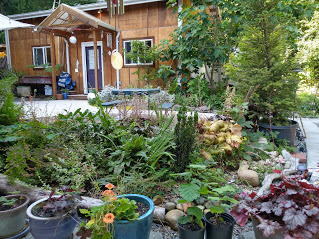Blog, Showcase
Sunscreen in Your Food
With all the conflicting advice about whether to wear sunscreen to reduce risks of skin cancer, or whether to scrap it because it might promote skin cancer, it’s no wonder we are confused! If you asked my mom for advice, she would proudly declare that she never wears sunscreen. If you were to ask my sister, she would quickly share her diligence in applying it on her baby whenever they spend the afternoon outside. My practice is somewhere in between. I wear sunscreen when I am outside, uncovered, for longer than 20 minutes during the brightest rays of the day, which is typically between 10 AM – 2 PM. When the sun’s rays are weaker, such as before 9 AM and after 4 PM, I’m less concerned about it. I want to have sunshine hitting my skin so that I can make vitamin D, and I like to avoid the chemicals often found in sunscreens.
You can eat “sunscreen foods” every day to maximize your body’s self-protection against damaging rays. Protecting your skin by eating food tastes delicious, too! This approach can help decrease your exposure to toxins found in sunscreens and allow you to soak up enough rays for your body to make its endogenous vitamin D. What a deal! Below are foods that are rich in Vitamins C and E, which are potent antioxidants that can both prevent and repair cellular damage caused by ultraviolet rays.
- Foods rich in Vitamin C include: All citrus fruits, melons, dark leafy greens vegetables, peppers, carrots, cherries, apples, kiwi, broccoli, berries, peaches, apricots, plums, pineapples, pomegranates, tomatoes, and many other fruits and vegetables. Since humans can’t produce their own vitamin C, we have to consume it in foods.
- Foods rich in Vitamin E include: Almonds, peanuts, wheat germ, sunflower seeds, pistachios, corn oil, avocado, whole grains and oats. Small amounts can be found in broccoli, corn oil, spinach, kiwi, and tomatoes.
- Chard: Luckily for us, these lovely, leafy greens contain both vitamins C and E! Flavonoids and other components in chard demonstrated an ability to inhibit proliferation of human cancer cells. These, and other dark leafy greens, can help protect your cells from free radical damage, caused in part by sun exposure. Tip: Toss a little extra-virgin olive oil and balsamic vinegar with steamed chard. Add walnuts, feta cheese, and sliced persimmon. Add salt & pepper to taste.
- Tea: Green, black, oolong, and white: Residents of the same bush, each of these tea leaf varie-teas provide important catechins and polyphenols, important antioxidant that can scavenge free radical damage created from sun exposure (and other consequences of free-living).
- Cacao: Thanks to its flavonols, it is popularly recognized as food that can help shield the skin against sun damage. In fact, raw cacao contains more phytochemicals and antioxidant capacity than almost any other food, including green tea or red wine! Dark chocolate, processedwithout alkali, is more likely to boast higher levels of flavonols and antioxidants, as well as around 5-10 mg of caffeine. We chocolate lovers can continue to worship it (while we worship the sun), thanks to its vitamin E and C content.
- Tomatoes: Cooked tomatoes offer more sun protection than uncooked tomatoes. While tomatoes are great in almost any form for their lycopene content, research continues to point us toward the benefits of cooking them.
- Citrus Fruits: Oranges, grapefruit, lemon, and lime. Limonin & limonene are powerful antioxidants found in the rind of citrus fruits that have been shown to reduce cancerous compounds.
- Roasted Peanuts: When roasted, their antioxidant content elevates by up to 22%! Peanuts are packed with beta-sitosterol, an anti-cancer compound, and resveratrol, an antioxidant that has earned red wine its respect.
Here are a few delicious ideas to pack into your picnic lunch:
- Waldorf salad (substitute walnuts for sunflower seeds or almonds) packed into a cooler
- Watermelon-tomato salad for an explosion of cancer-protecting lycopene (recipe here)
- Yogurt parfait with rolled oats or granola, soaked sunflower seeds and berries.
- Enjoy a pasta salad tossed with peppers, broccoli, chopped spinach, walnuts, and spaghetti sauce.
- Grapefruit and avocado salad (recipe here) w/ toasted almonds on the side
- Apple slices with almond or other lovely nut butters
Which of these ideas is the most surprising? What ideas can you share about antioxidants in foods?
Frances Arnold, RD, CLT, ERYT
I help people who are struggling with fat, fatigue, digestive problems and nutrition frustration.









Leave a reply